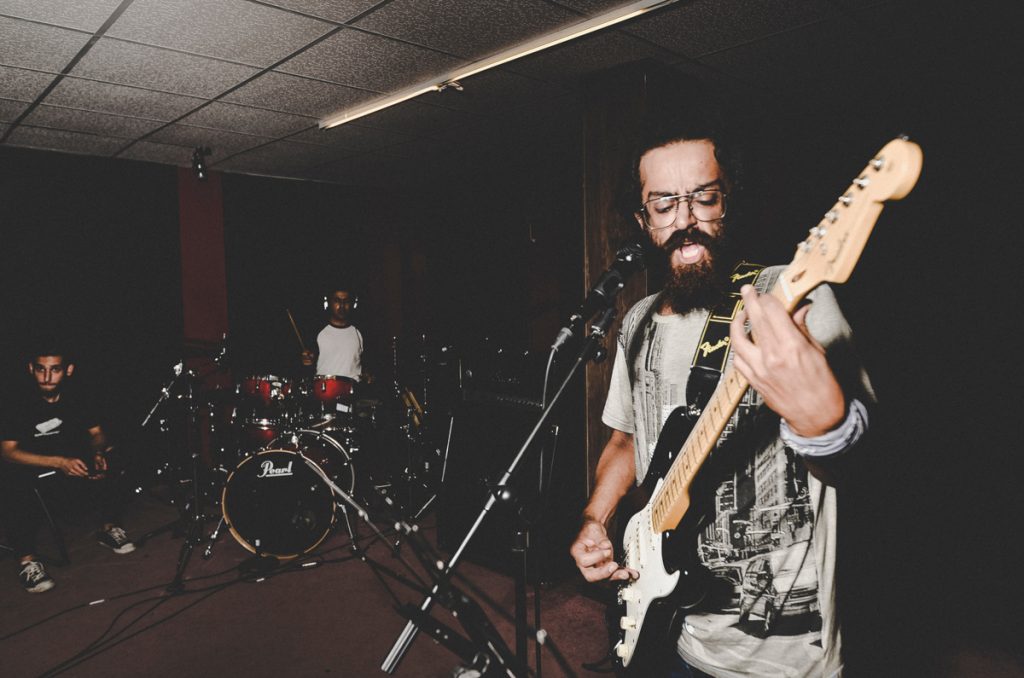Whether you want to sound like Metallica or Bruno Mars, a good rhythm section is the backbone to any good band. There are so many benefits to improving your rhythm section from simply wanting a good groove or you driving listeners to get up and dance. The best bands in every genre of music can be distinguished by their solid rhythm section. Creating a dynamic rhythm section is the foundation of a good band. These five tips will give you advice on how to improve rhythm and timing and build strong rhythms!
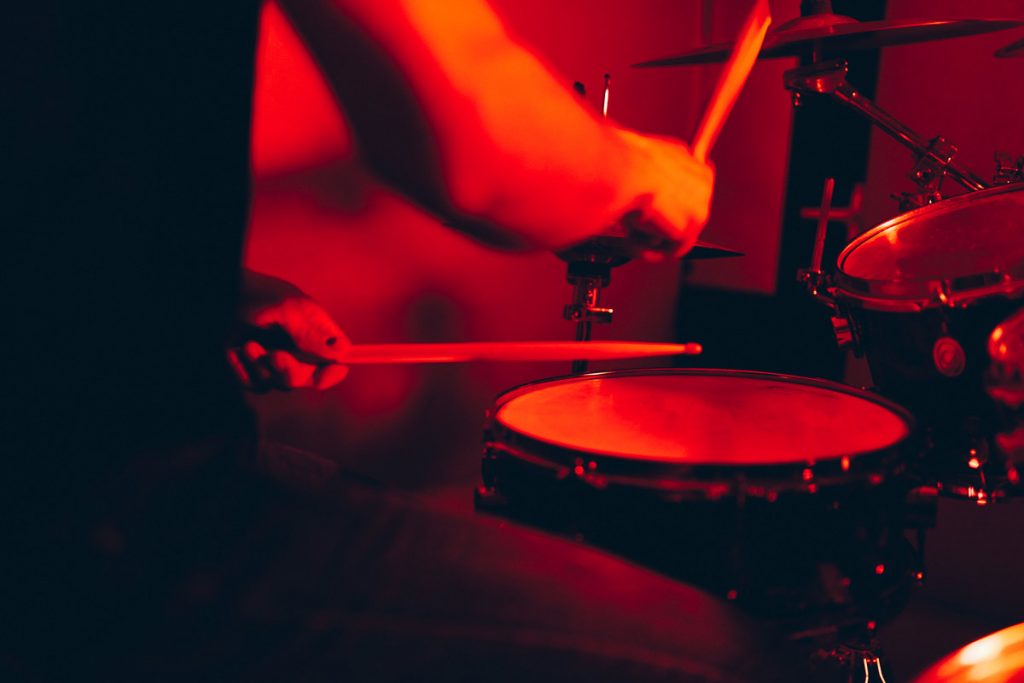
Keep it Simple
This is the best place to start is to simply learn to play together and keep a steady tempo. As a solid rhythmic foundation, each player needs to be individually responsible for his or her own timing, intonation, syncopation, and overall knowledge of the tune. If the players understand the driving musical force of that particular song, and their place within it, it will help them to keep a steady tempo as a unified band. This is an example of every instrument and musician serving a distinct purpose and serving the song, together.
Embrace Call & Response
Implementing and installing “call and response” in your music tool kit, can instantly take everything your band is doing to the next level. The idea is simple: a statement is made or a question asked, and the response or answer follows. Sometimes the response is simply a repetition of the leader’s call, and sometimes it’s a traditional statement of affirmation. You hear this in music of all kinds – the back and forth musical ‘dialogue’, is what’s called “call and response.” For some in-depth looks at different types of “call and response”, check out this great article from FlyPaper on Soundfly to break down where it happens and what to listen for. Musicians can often create an extremely propulsive, syncopated sound precisely because they’re not seizing every opportunity to fill the repertoire by themselves. This is a powerful, yet subtle, example that sometimes it’s not what you play, but what you don’t play that creates the forward momentum of a truly great rhythm section. The cohesion between a successful call and response could be described as a high level of empathy and listening to one another, which will result in some truly dynamic sounds.

Contrast Vocals with Rhythmic Phrases
If you look up contrast in the dictionary, you’ll find the following definition: the state of being strikingly different from something else, typically something in juxtaposition or close association. It’s the concept of having two elements, which differ significantly from each other. Rhythm is one element that can really come alive with the contrast principle. For instance, choosing shorter note lengths in your verses and bridge, and longer ones in your chorus. They manage to avoid chaos because all the parts are well engineered to create an uncluttered finished product. And most importantly, there’s still plenty of space for the vocals. The rhythmic contrast principle works in almost any genre of music, from Classical to hip hop and modern day pop. If you find that your own songs feel like they are lacking and you can’t pinpoint why, check out the rhythms you’ve been using, and see if there are ways to add some contrast vocals between the verse and the chorus.
Build on The Bassline
In most bands, a combination of drums, bass, guitar, percussion, and keys make up the rhythm section. With just about every groove, you have the choice to keep it simple or make it more complex. In dense musical situations, keeping things simple will make room for other parts to fit in, which is always a great idea. But it can also be good to create something complex that works together with other parts as well. Particularly for basslines, one of the most challenging things to work out is how the drums will interact with the rhythm to make music that achieves something specific, without creating a power struggle. When writing music, it’s also important to consider that perfect balance between bass and drum parts that will be predictable, those that will be complex, and of course, those that converge to create a solid groove. Although moments of complete unison between drums and bass are necessary for a song to groove and utilize cohesion, total unison throughout an entire tune doesn’t afford the players any freedom to add embellishments to their parts. It also prevents the song from creating any kind of tension and release, a key aspect of evocative songwriting and groove-crafting.
Let the Groove Flow
Being adaptable and versatile while playing will help create a flow the whole group can get on board with. When trying to cultivate a truly great rhythm section, musicians should try to remember that, as rhythm players, they are accompanying 80% of the time, and drummers or bass players are accompanying even more than that. If you spend a lot of time in a power struggle and want to lead, not only will it be hard to ever attain a unified rhythm, it will also be hard to find that groove flow. Being able to adapt to your musical environment is extremely important. Whether it’s the style you’re playing, the skill level of musicians you are playing with, or the physical environment you are playing in, a good rhythm section player needs to rise above all of it. So leave your ego at the door, and get ready to play as a band and not a soloist.
Now that you know how to improve rhythm and timing, what tips are young most excited about integrating into your process?
While vintage gear is cool and can help you create a vibe, don’t forget to incorporate new tech items that can benefit musicians in a number of ways. These tools can offer you new sounds and help make your process easier and smoother. You would be hard pressed to find the famous LA2A compressor from 1962 brand new at your local music store, but with new music technology in 2022 you might not have to! There are plug-ins and VSTs that can replicate some of the best sound technologies and guitar pedals out there without breaking the bank! We will outline how to make music on your own using the latest music technology.
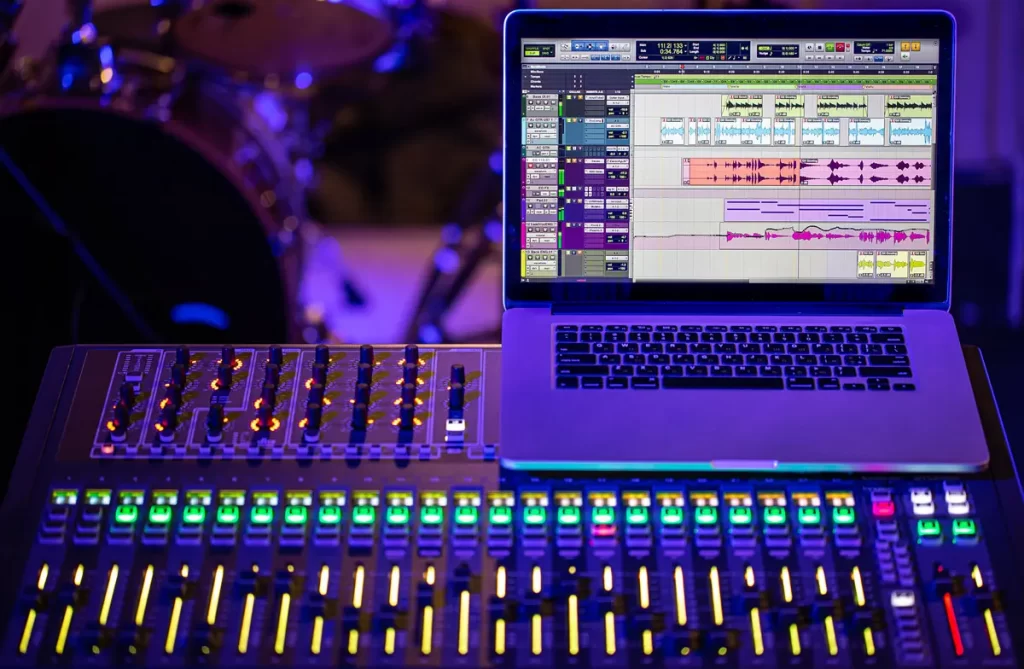
Boss’s Pocket GT guitar processor? Zoom’s G6 touchscreen guitar pedal? Gibson’s augmented reality app? What new music tech tools are you using in your music practice? Embracing new tools can give you access to new sounds, and can improve your process for making music. Read on to learn about the latest gadgets that can help you create and explore new musical sounds and can boost your skills.
Boss’s Pocket GT Guitar Processor
Boss’s Pocket GT guitar processor tool brings the power and sound of their massive amps to a small device that makes it easy to record YouTube videos. Instead of needing a massive amp, The Pocket GT communicates with Boss’s Tone Studio and Tone Central mobile/desktop apps. The app offers a range of amps and effects and you can save your performance settings. The device connects to Bluetooth audio or directly into your computer over USB.
Zoom’s G6 Touchscreen
Zoom’s calls its G6 device “the future of guitar pedals” a name it has earned being the first guitar pedal with a color touchscreen. Guitar players can color-code stomp effects and use the colors on the screen to quickly switch between settings. The tool includes 135 effects and 68 rhythm patterns that can be programmed into infinite loops. The device honors classic sounds of some of the best known amps in rock n’ roll with new takes on how to distort to an amplifier’s sound.
Gibson’s App
Gibson App’s smartphone app makes life easier for guitarists from beginners to experts. The app includes tools for learning how to play the guitar, as well as a tuner and play-along tabs. Players can learn through an augmented reality feature that adapts to the player’s level and provides lessons accordingly. The learning becomes interactive by feeding players challenges based on their level, providing real-time feedback and adjusting as they master different techniques. Whether you are a rookie or seasoned guitar player, you can use the app to improve your technique and make your band sound better. You simply need your guitar, the app and a pair of headphones.
The app also offers a virtual tuning tool and even free one-on-one consultation with a Gibson pro guitar tech to make sure you are taking the best possible care of your gear.
Soundbrenner Core Metronome
Soundbrenner’s Pulse smartwatch was created just for musicians to help improve their performance. The Soundbrenner Core includes a built-in metronome that players can use to ensure they are keeping in time with the music. A great device for touring musicians that might end up in a room with sound challenges and an inability to headband members. The watch comes with straps for players to attach the metronome to their arm or leg, a small magnetic tuner disc that can attach to an instrument, as well as a pair of headphones so that the player can tune in.
Snark Super Tight Tuner
The tiny Snark Super Tight Tuner mounts on to the tip of your guitar and uses it to tune your instrument. The device has a 360 degree rotation, so once you mount it, you can turn it towards you. The digital screen lets you set the key to E or D and quickly tune up your band. The tool also lets you adjust your pitch calibration and even includes a transpose feature so that when you use a capo, you can adjust the flat tuning to a standard E. The Snark Super Tight tuner also includes a Tap Tempo metronome, so you can always keep yourself in time.
Roland Micro Cube Practice Amp
Roland’s Micro Cube Practice amp makes practicing easy no matter where you are. Driving in a tour bus or hanging out at the beach, you can easily carry this battery-powered device along and kick up the jams. The ultra-compact portable DSP guitar 5-inch speaker runs on 20 hours of battery power and includes a handful of DSP effects including chorus, flanger, phaser, tremolo and Delay/Reverb. No excuses to get your practice on. No need for a wall of Marshall stacks.
Korg’s DW-800 Synth
Korg has updated its classic DW-800 Synth with a modern touch. The Modwave lets players modulate 200 different wavetables, each made out of up to 64 waveforms. Keyboard players can change the character of these waveforms with modifiers and morph types. This gives you vintage synth sounds with endless modern possibilities.
No matter what instrument you play or what genre of music you are playing, these small new-school tech devices can help you improve your game and have some fun. Embracing new tools can also boost creativity as you look for new ways to manipulate and evolve your sound and get it out into the world. What’s your favorite New music technology in 2022?
How are you attracting new fans to your band? Are you connecting with your community? Have you found great collaborators to help promote your band? There is an endless stream of content out there competing for people’s attention, and new bands can be challenged to break through and build a fanbase from scratch. One of the best ways to get people to listen to your band is to show up authentically in the spaces your potential audiences are already spending time and connect with them and share music. Whether you already have a marketing plan or you’re just now setting up your own first social media account, these five tips will help you to cultivate an audience and create a long term strategic marketing plan. This is our guide on how to build a fanbase and possibly get 1000 fans in 90 days!
Identify Fans
Your first step toward growing an adoring fanbase is figuring out who might be interested in your music. Is there another band you love who has had a big influence on your music? Are there online communities based around the specific genre of music you make? If you can find out where potential fans are already spending time online, you can work to create a presence in those spaces and turn new people onto your music. You can also monitor the hashtags and trends your potential fans may care about, and make an effort to join those conversations when you can!
One key aspect of making this work is authenticity. If you make a new account on a forum site or go spamming your bandcamp link in the comments of well-known artists’ posts, you may not get a lot of mileage from that approach. On the other hand, if you spend time in the communities you are targeting, engaging in conversations and getting to know how people communicate, the right time to share your work will present itself, and by that time you’ll likely have already made some connections with people who will be interested in listening! It takes time, but it’s a strategy that can pay off.
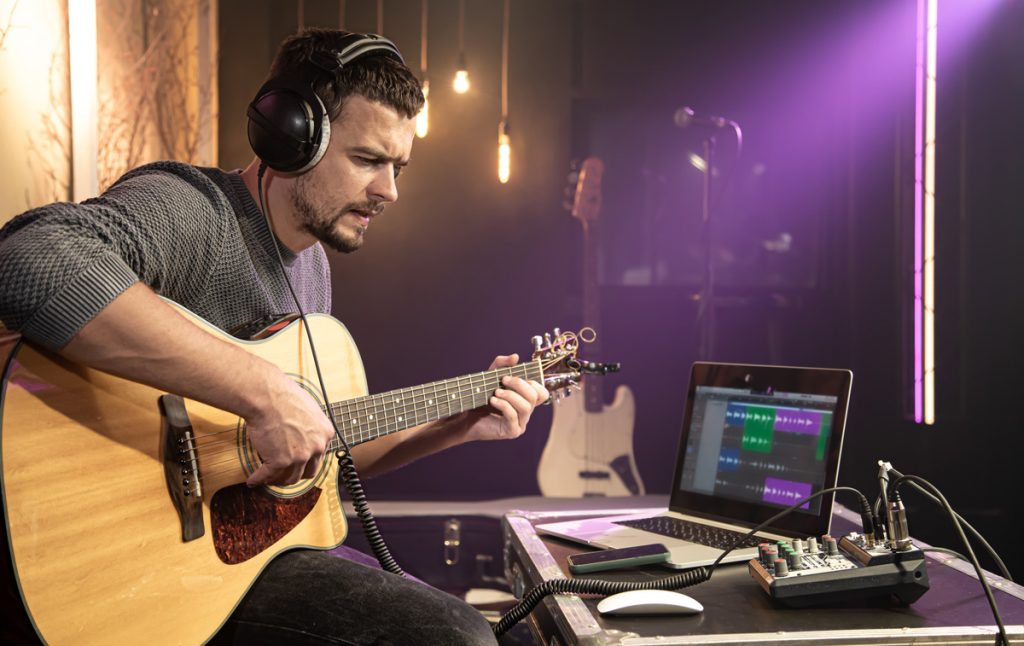
Show Your Work
It goes without saying that you’ll want to share your music using any platforms you can. If you’ve got a personal account on social media sites, re-share your band’s posts there when you release new music.
But your sharing potential doesn’t begin and end with finished songs, you can also take advantage of social media to share photos, snippets of in-process work, and any other interesting moments from your musical journey (rehearsals, soundchecking before a show, silly moments in the studio, etc.) by giving fans a window into your creative process, you’ll create a heightened sense of investment from the people who are keeping up with you.
Team Up
Here’s a strategy that will help you grow your fanbase and create new connections in the musical world at the same time. If there’s a band (especially one based in the same city as yours) that you admire a lot, reach out and see about setting up a show with them! This will give you an opportunity to showcase your music to the other band’s fans, and vice versa.
This will also help you build your music scene rolodex. Other bands may know the booking agents for venues around town (or around the world), or who to reach out to when you want to go into the studio and lay down a polished release. They can also help introduce you to members of other bands you’ll want to collaborate with.
Music especially is a business built largely around relationships, and having friends and peers in the scene—finding your people, in other words—creates a sense of community and enriches your experience as an artist. Making these connections can also lead to unexpected opportunities down the road, but again, authenticity is key with these relationships. Make friends with another band because you love their music first and foremost, and good things will follow.
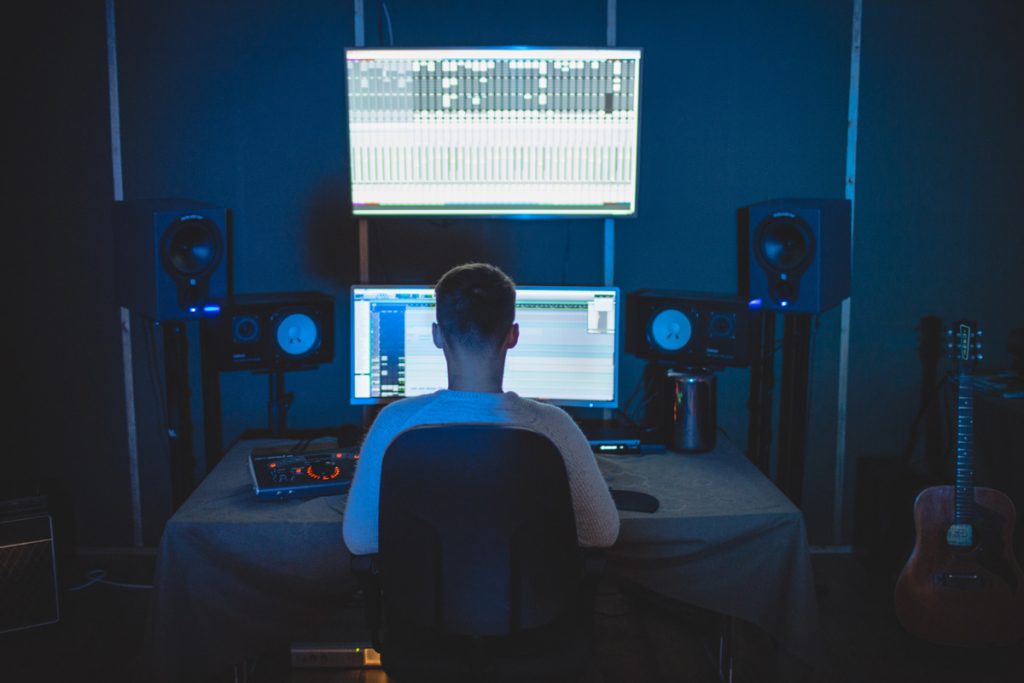
Send Emails
Although many bands connect with fans mainly through social media, there’s still no substitute for a solid email list that you can hit when you have new songs out, live shows to promote, or cool merch to sell. One of the reasons email is so important is because you don’t have to compete with the ever-changing algorithms found on social platforms, which dictate what posts get shown to whom.
With an email list, once your fans sign up, you can feel more confident that your messages will reach their inboxes. To get started, create your email database on an email marketing platform, then put a signup box on your band’s website! You can even offer cool perks like a free song download code or a sticker for signing up when you first launch. Having a tried and true way to reach out to fans will pay off time and again as you navigate your musical journey.

Keep in Touch
Everyone with a creative streak has experienced the enthusiasm of putting something out there for the first time, followed by a slow and steady waning of interest as life continues on and we become engrossed in the next thing. With that in mind, you want to keep your presence in places your fans are seeking you out (i.e. your website, your email list, your social media pages) up-to-date and consistent. Got a social account that hasn’t been updated in a month? Fans may start to wonder if you’re still making music. Keep them engaged by posting consistently, even if you don’t necessarily feel like you have anything new and exciting to share. It’s never a bad time for candid rehearsal photos or reminders about your most recent releases. Commit to cultivating a strong presence on your platforms, and you’ll consistently grow your audience every time you post an update.
Now that you know how to build a fanbase from scratch, let us know what works for you and if you ever tried these methods!
🤫 #April27
We did it! We’ve wrapped another marathon Reg CF campaign with 966 new investors to boot and over $920K in commitments 🥳
With the campaign in the rearview it’s time we announced some competition winners. Congrats to @ClementCapo over on Twitter who wins one of our 400 exclusive Vampr OG Investor NFTs for sharing the campaign with their network!
Whilst we didn’t quite hit the $1M threshold to unlock the recording experience with Anthony Kilhoffer, we want to thank every single person who entered the competition and we are excited to reveal *right now* that every song we received has been forwarded onto the legendary producer for consideration 🔥
To those of you who are expecting perks (including NFT baseball caps from the first round), please bear with us over the next 4-6 weeks while we reconcile all campaign investments. Once we have finalized 100% of receipts you will receive a personalized email on how to redeem or collect your perks 😎
Thanks again everybody – we simply couldn’t do this without your support, belief and investment.
Here’s to the future – Josh & Baz ✌️
Over the past several months we’ve been approached by various major institutional investors in addition to entertainment companies listed on the New York Stock Exchange. We hoped to have something to announce before the campaign wrapped but it’s looking like we’ll have more news on that in the coming weeks and months…
What does that mean for you? This is Vampr growing up and further signals that this will be our last crowdfunding round before moving into significant venture capital and private equity territory.
So this it guys – last call!
Your final reminder – there are just three hours remaining.
To recap for anybody who needs that one last nudge, this is what Vampr has achieved up until now:
📈 1 million signups in 190 countries with 22% MoM revenue growth
🚀 $3.3M raised from music industry execs, VCs, angels and 2500+ crowd investors 🦄
🌎 7 million connections brokered to-date between aspiring young artists & industry professionals
🎵 Our users have generated 62Bn streams on platforms like Spotify & TikTok, with $162M in royalties
💸 $16.5 billion serviceable obtainable market, set to double over the next decade
🚨 Projected Run Rate of $9M by Q4 2023 on current growth trajectory (not guaranteed)
🏆 Award winning platform including Apple’s Best of the Year & Fast Company’s Most Innovative 2022
📰 Featured in Forbes, TechCrunch & NASDAQ — investors include executives from Beatport, WMG & Sony
Just think, in the next three hours you can decide whether or not you can call yourself a Vampr shareholder and brag to your friends that you own a piece and helped fund the future of collaboration in the creator economy.
Here’s the link to invest for the final time – www.wefunder.com/vampr
See you in a few hours!
Josh & Baz ✌️

